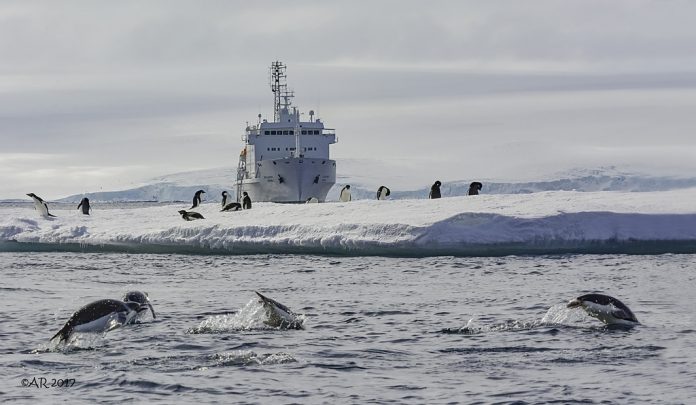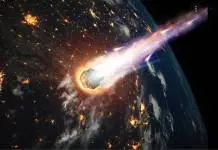
The British Antarctic Survey has released the first footage ever of the Larsen C’s big break and the birth of the A-68 iceberg as it drifted apart of its mainland platform through 8 miles into the Weddel Sea.
The Larsen Ice shelf is one of the largest of its kind and it’s located in the northwest part of the Weddel Sea. In 2005 it was 5800 km2 long. Larsen C however, one of the sectors of the ice-shelf has been reportedly crumbled into the sea, it is an iceberg twice the size of Luxembourg and it is also considered four times the size of London. It weights around 1 trillion tons.
The shelf is divided into 4 sectors determined by four letters A, B, C and D. Since the mid-90s Larsen B has been collapsing into the sea and revealing a thriving chemotropic ecosystem half a mile (800 meters) below the sea. This led the U.S Antarctic Program to discover it by mere chance.
However, in 2007 satellite-based data revealed that the mass of ice shelves in Antarctica is over the ice sheet is completely negative. Scientists have yet to determine the nature of this phenomenon, but iceberg calving or climate change melting upper and lower levels of the surface causing them to break into the sea and consequently the dissolution of the ice sheets are among the likely options.
A team of scientists, led by BAS, heads to #Antarctica this week to investigate a mysterious marine ecosystem that’s been hidden beneath an #Antarctic ice shelf for up to 120,000 yrs #LarsenCBenthos https://t.co/qXC2UDXO47 @dr_will_reid @melkmack @adrg1 @susie_hailey @mucofloris pic.twitter.com/teFskEr8mZ
— Antarctic Survey (@BAS_News) February 12, 2018
Which Larsen Ice Shelf sectors caused the big break?
Larsen A completely disintegrated in January 1995 while Larsen B has been collapsing partially since 2002 and lost 3250 km2, an area almost the size of Rhode Island. In 2015, studies revealed that by 2020 this sector will be gone as well.
Larsen C also is the fourth largest iceberg in Antarctica, it appeared to be relatively stable, but constant warming of the globe led to its big break, originating iceberg A-68 on July 10, 2017, making Larsen C lose 10 percent of its surface area
The Weddell Sea sea ice in #Antarctica is heavy right now. They are going to find it tough to reach #iceberg A68 https://t.co/6Y2up6U1lz pic.twitter.com/DGDcwqIuaw
— Mark Brandon (@icey_mark) February 14, 2018
A-68 iceberg will be explored as soon as possible
According to scientists and speculative tests, the A-68 iceberg did not mean a significant loss for Larsen C, but it does signify a concern for scientists, it creates the doubt of whether its formation is completely accredited to global warming and expanding waters or just a part of an iceberg’s natural cycle.
Satellite images from the European Union’s Copernicus Program and ESA provide evidence regarding the splintering of the A-68 forming other icebergs as it drifts through the sea. European Union scientists stated, “it didn’t just break through in one clean shot, but it formed a lace-network of cracks first.”
However, it is predicted that its imminent melting could be a significant cause and add to the concerning sea level rise, as it drifts away from its mother source.
Source: British Antarctic Survey











